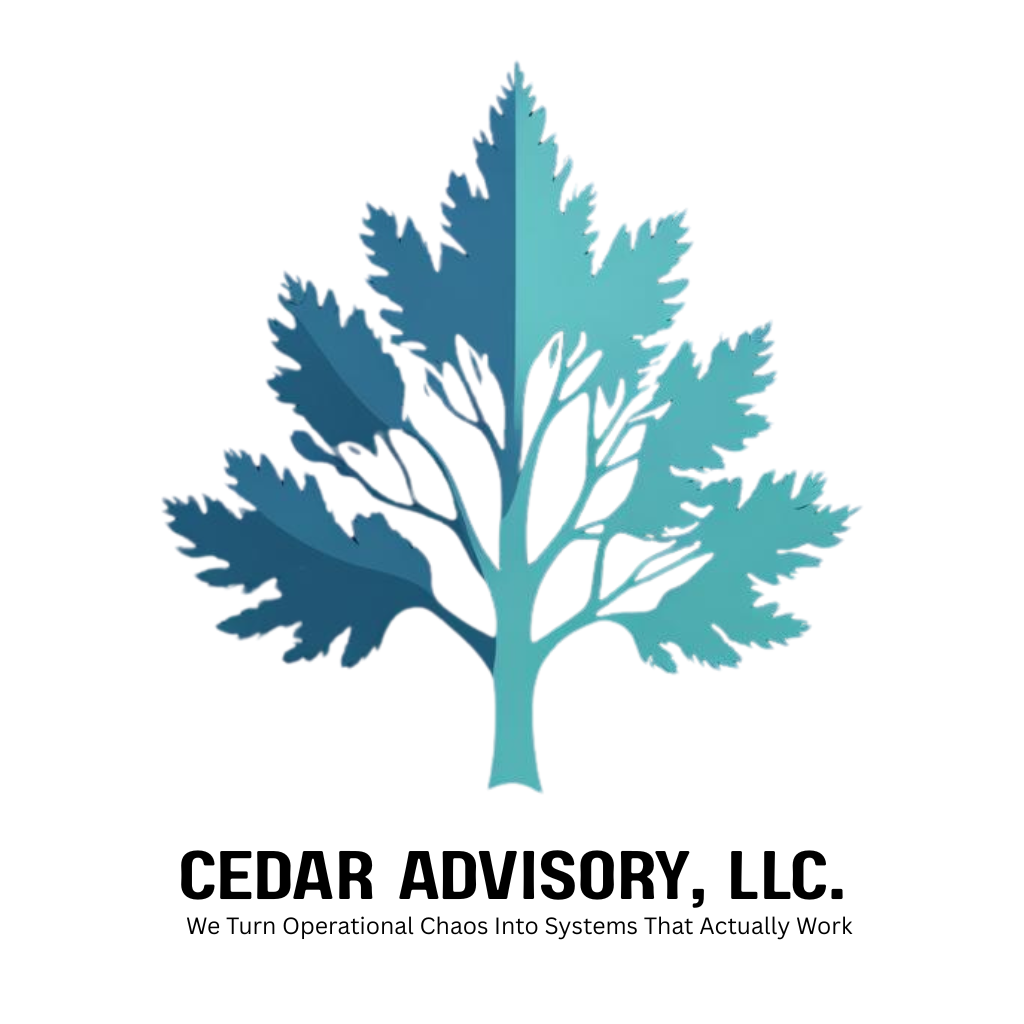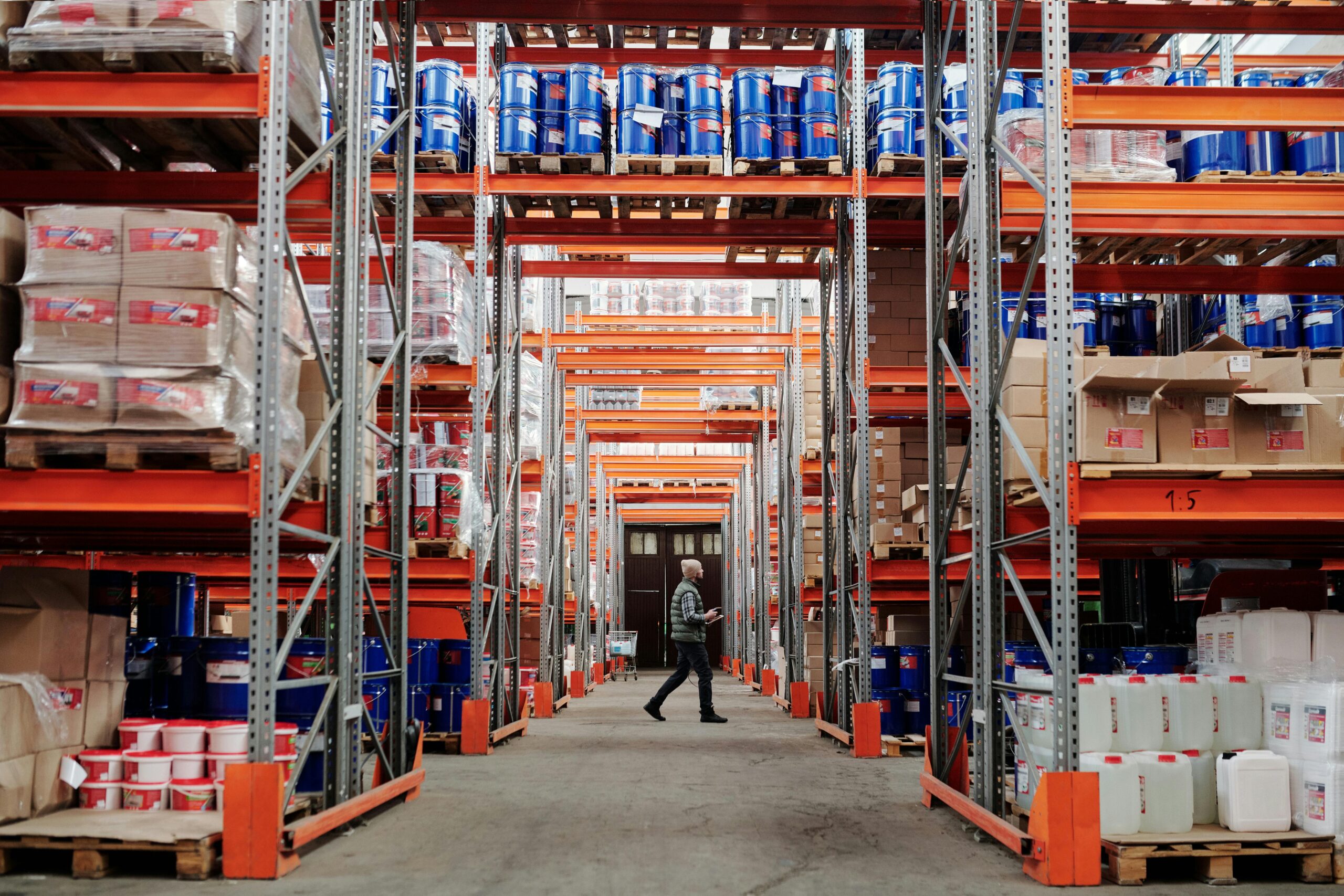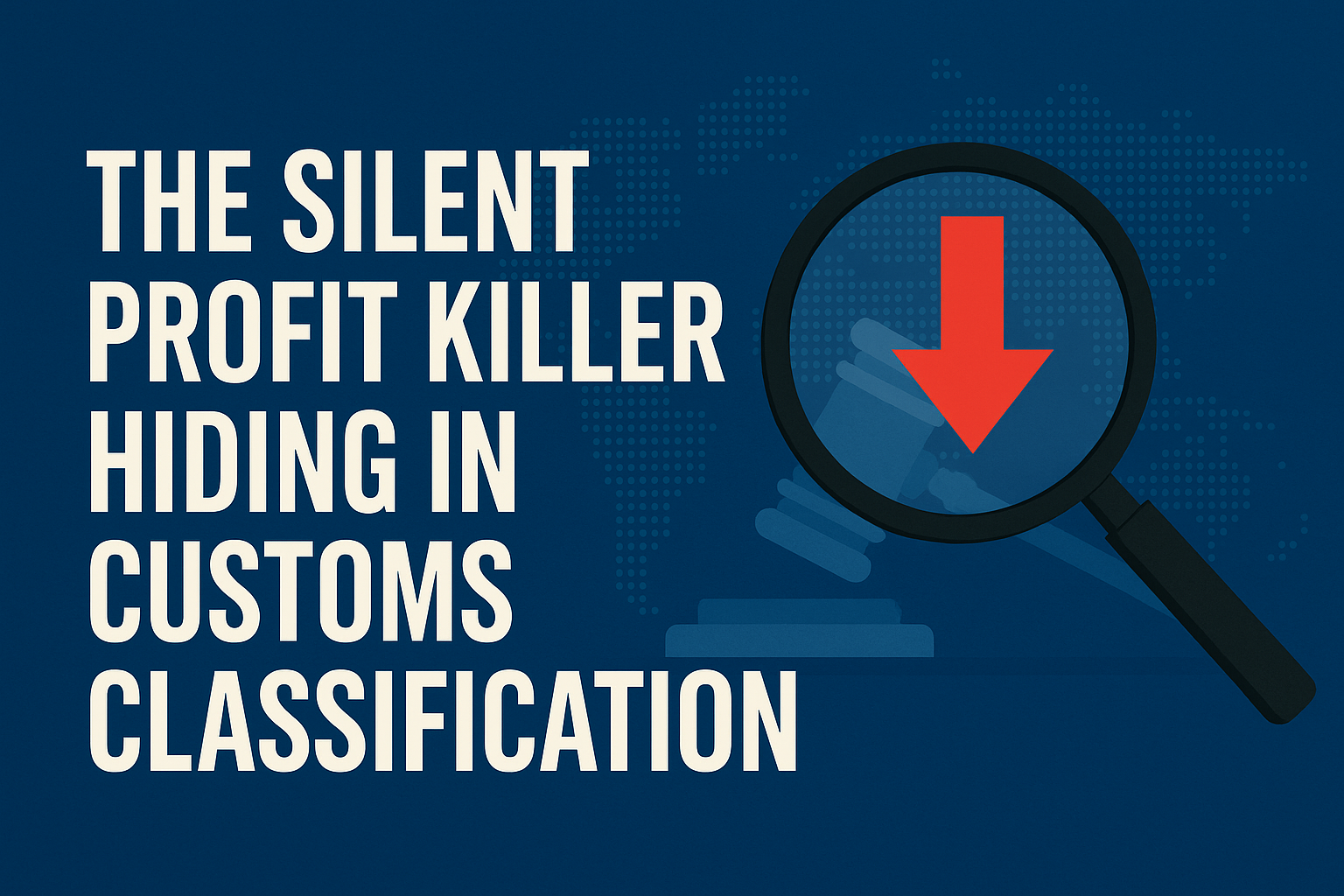The brands that survived the last five years didn’t just weather the storm—they used it to build unbreakable supply chains while their competitors crumbled.
The COVID-19 pandemic fundamentally transformed supply chain management for consumer packaged goods (CPG) brands, creating disruptions that exposed critical vulnerabilities while accelerating innovation. Companies experienced an average of $82 million in annual losses by 2022, with consumer goods sector facing 30% of one year’s EBITDA at risk over a decade from disruptions. However, brands that proactively invested in resilience emerged stronger and better positioned for future challenges.
As Tim Cook, Apple’s CEO, noted during the height of the pandemic: “We’ve learned that no matter how sophisticated your supply chain is, you need to have redundancy built in.” This insight proved prophetic as the most successful CPG brands shifted from reactive crisis management to proactive ecosystem design, fundamentally rethinking their approach to operational resilience.
The lessons learned from 2020-2024 disruptions now provide a roadmap for emerging CPG brands seeking to build antifragile supply chains. With 47% of global supply chain executives still seeing their businesses as vulnerable to disruption in 2025, understanding these insights has become mission-critical for long-term success.
The six categories of disruption that reshaped CPG
Post-COVID disruptions manifested across six distinct categories, each teaching unique lessons about supply chain design and revealing critical vulnerabilities that CPG brands had previously overlooked.
1. Raw Materials Shortages affected 90% of CPG leaders, forcing 62% of manufacturers to reformulate at least six products within two years. From aluminum shortages affecting beverage cans to petroleum-based plastic disruptions, brands discovered how dependent they were on just-in-time material flows. The semiconductor shortage particularly impacted smart appliances and connected packaging, while palm oil supply constraints from Malaysia and Indonesia forced food manufacturers to seek alternative oils, often at 40-60% cost premiums. Critical packaging materials like glass bottles faced months-long delays, with some beverage companies paying 3x normal rates for expedited production slots.
2. Logistics and Transportation Disruptions demonstrated the fragility of global shipping networks. The Suez Canal blockage in March 2021 showed how single points of failure could impact $9.6 billion in daily trade, with late shipments spiking 11% during the six-day blockage. Port congestion at Los Angeles and Long Beach created 40+ day delays for container unloading, forcing CPG brands to air freight products at 10x normal costs. Truck driver shortages peaked at 80,000 open positions in 2021, leading to delivery delays and $15-25 per pallet surcharges that persisted through 2023. Ocean freight rates increased 300-400% from 2020 to 2022, fundamentally altering the economics of global sourcing.
3. Manufacturing Disruptions revealed dangerous geographic concentration risks. China’s production of 95% of dumbbells created months-long stockouts when demand increased 600% during lockdowns. Similarly, Taiwan’s control of 65% of global semiconductors and 90% of advanced chips exposed entire industries to regional vulnerabilities. Factory shutdowns in Vietnam and Malaysia disrupted apparel and electronics production for months, while India’s COVID lockdowns affected pharmaceutical ingredient manufacturing that supplies 40% of global generic drugs. The lesson became clear: geographic diversification was no longer optional but essential for business continuity.
4. Geopolitical Tensions further complicated the landscape. The US-China trade war reduced bilateral trade by 16% in 2019, forcing companies like Samsung to shift smartphone manufacturing from China to India and Vietnam. The Russia-Ukraine conflict disrupted petroleum and natural gas supplies—the backbone of CPG manufacturing—while severing key commodity supply lines for wheat and sunflowers. The 2024-2025 tariff situation has created unprecedented volatility, with rates initially spiking to 145% on Chinese imports in early 2025 before stabilizing at 55% following June negotiations. CPG companies face an August 1st deadline where countries without new trade deals will “boomerang back” to the original April rates—ranging from 10% to 50% depending on country and product. Canada faces 35% tariffs starting August 1st, while the EU negotiates to avoid 30% rates. This uncertainty has forced CPG brands to pre-order massive inventory quantities and develop contingency sourcing strategies, fundamentally altering the economics of global ingredient procurement and finished goods imports.
5. Cybersecurity Threats emerged as an unexpected supply chain vulnerability. The Colonial Pipeline ransomware attack shut down 45% of East Coast fuel supplies, affecting 71% of Charlotte gas stations. JBS Foods, the world’s largest meat supplier, faced similar ransomware attacks that shuttered processing plants across multiple continents, demonstrating how digital vulnerabilities could create physical disruptions. The average cost of supply chain cyberattacks reached $4.35 million per incident by 2024, with recovery times averaging 287 days. Food manufacturers became particular targets, with attacks on Schreiber Foods disrupting dairy operations and NotPetya malware causing $300 million in damages to Mondelez International alone.
6. Labor Shortages compounded every other challenge. The CPG industry added only 12,000 jobs in Q2 2021 despite 4.6% wage increases in food manufacturing. By January 2024, 622,000 manufacturing positions remained unfilled, with companies like Tyson Foods planning $1.3 billion automation investments to eliminate 3,000+ jobs by 2024. The “Great Resignation” hit food processing particularly hard, with turnover rates reaching 75% annually in some facilities. Warehouse worker shortages forced many 3PLs to offer $5,000+ signing bonuses and implement four-day work weeks, fundamentally changing the cost structure of fulfillment operations.
Success stories and cautionary tales from the frontlines
The winners and losers from this period reveal crucial strategic differences. Procter & Gamble exemplified successful crisis navigation through their “double down” strategy, increasing manufacturing capacity for essential products while implementing AI-powered supply chain solutions. Their KNIME analytics platform integrated data for 5,000 products and 22,000 components, eliminating the need for 10+ experts in data verification while maintaining production across 100+ global manufacturing sites.
Nike demonstrated the power of digital transformation, accelerating RFID technology programs and using predictive demand analytics to minimize store closure impacts in China. They limited sales declines to just 5% while major competitors suffered larger drops by rerouting inventory from physical stores to digital channels.
Unilever’s crisis response showcased comprehensive preparation with their COVID-19 Awareness and Situational Intelligence (CASI) tool, accessed 800 times daily across global operations. During South Africa’s civil unrest, their Chennai hub operations provided continuity when local teams faced disruptions.
Conversely, companies that struggled shared common characteristics. Revlon filed Chapter 11 bankruptcy in June 2022 after COVID-induced supply chain disruptions compounded existing debt management issues and competitive pressures from beauty startups like Glossier. BH Cosmetics, despite popularity among Gen Z consumers, couldn’t achieve profitability during pandemic-driven beauty routine changes.
Guitar Center’s struggles illustrate how pre-existing vulnerabilities amplified during disruptions. Their debt burden from 2007 private equity acquisition, combined with growing competition from online sellers during lockdowns, forced bankruptcy despite maintaining 300+ store operations.
Current resilience landscape reveals persistent gaps
Supply chain resilience in 2025 has evolved significantly, yet critical vulnerabilities persist. While 86% of operations haven’t experienced catastrophic events in the past two years—up from 77% previously—only 7% of supply chains can execute decisions in real-time despite 95% needing to quickly react to change.
Technology adoption accelerated dramatically. 80% of CPG supply chains are projected to integrate AI by end of 2025, with current adopters reporting median ROI of 3.5x investment over three years. Digital twins, growing at 30-40% annually toward a $125-150 billion market by 2032, enable productivity improvements of 20-40% in warehouse operations.
However, significant challenges remain. Data fragmentation and quality issues limit technology ROI for 44% of companies. Workforce shortages affect 63% of supply chain organizations, with 68% struggling to recruit qualified AI specialists who command 35% salary premiums.
Geographic diversification shows mixed progress. While 93% of companies planned diversification, less than 10% actually implemented meaningful changes by 2022. Nearshoring strategies are gaining traction, reducing lead times by 25% and logistics costs by 10-15%, but execution remains inconsistent across the industry.
Five strategic pillars for emerging brand resilience
Emerging CPG brands should implement a comprehensive resilience framework based on five strategic pillars that address the core vulnerabilities exposed by recent disruptions.
1. Network Redesign represents the foundation, shifting from linear supply chains to networked approaches with built-in redundancy. Leading companies now target 30%+ of key products from three or more qualified manufacturing sites across different geographic regions. This distributed approach prevents single points of failure while maintaining cost efficiency through strategic regional hubs.
2. Supply Chain Buffers require strategic recalibration. Companies should maintain capacity utilization under 85% to preserve flexibility, while implementing multi-echelon inventory strategies that balance just-in-time efficiency with just-in-case resilience. Safety stock targets should equal approximately six weeks of supply—the healthy benchmark for emerging brands that provides cushion without excessive carrying costs.
3. Proactive Supplier Management demands transparency beyond first-tier relationships. This includes assessing supplier criticality, monitoring credit ratings and geographic concentration, and developing collaborative ecosystems that share risks and resources. 81% of companies implemented dual-sourcing strategies by 2021, up from 55% in 2020, recognizing that backup suppliers are no longer optional but essential.
4. Active End-to-End Risk Management requires comprehensive monitoring covering suppliers, regions, finances, and cybersecurity. With software supply chain attacks expected to affect 45% of organizations—a 3x increase from 2021—integrated security frameworks become essential. This pillar includes early warning systems, scenario planning, and rapid response protocols.
5. Anticipation-Based Planning leverages digital twins, scenario modeling, and AI-powered predictive analytics. These tools enable companies to predict major disruptions 78% accurately up to nine days in advance, providing crucial response time for mitigation efforts. Advanced planning transforms reactive crisis management into proactive risk prevention.
Technology and diversification create competitive advantages
Technology investments deliver measurable results when properly implemented. AI-enabled demand forecasting improves accuracy by 78% for major disruption prediction, while route optimization reduces transit times by 22% and shipping costs by 15%. Autonomous supply chain planning can increase revenue by up to 4%, reduce inventory by up to 20%, and lower costs by up to 10%.
Digital twin implementations, despite requiring $500K-$2.5M initial investments with 15-20% annual maintenance costs, provide compelling returns. Process industries achieve 1-3 percentage point EBITDA improvements, with inventory reductions averaging 5% and capital expenditure reductions reaching 10%.
Geographic diversification strategies must balance cost and risk considerations. Multi-region sourcing approaches, moving from China-centric models to distributed networks spanning Mexico, India, and Vietnam, provide operational flexibility. 95% of retail value is expected to be represented by purchasing groups in Europe by 2025, creating collaborative opportunities for emerging brands.
Warehouse management system adoption reached 93% in 2024, with paper-based picking methods declining from 56% to 44% as technology displacement accelerates. IoT implementation enables real-time environmental monitoring for quality assurance, while blockchain provides traceability solutions for fraud prevention and supply chain transparency.
Financial frameworks justify resilience investments
The financial case for supply chain resilience is compelling and quantifiable. Companies with high resilience outperform peers by 30 percentage points in total shareholder return during crisis quarters, compared to 16 percentage points during stable periods. Digital supply chain leaders achieve up to 10 percentage points higher product availability with response times improving by more than 25%.
Budget allocation recommendations suggest emerging brands should dedicate 15-20% of their total supply chain budget to resilience initiatives. For established brands with $2M revenue, this translates to approximately $200K annual investment, while emerging brands at $400K revenue should allocate $80K for aggressive growth positioning.
ROI calculations demonstrate clear payback periods. Supply chain technology investments typically require three-year payback periods, with some implementations delivering exceptional results. Avaya achieved 200% improvement in inventory turns and 94% reduction in cash tied up in stock. A pharmaceutical distributor reduced forecast errors by 25% and inventory excess by 40% within six months while increasing service levels from 80% to over 95%.
Cost quantification frameworks should include raw material premiums, aggregate freight expedite costs, manufacturing line shutdown expenses, and revenue losses from service failures. These calculations provide clear justification for resilience investments while establishing measurable success criteria.
Preparing for tomorrow’s disruptions requires proactive positioning
Looking ahead, emerging threats demand immediate attention and strategic preparation. AI-powered cyber attacks represent the most sophisticated risk, with coordinated attacks across multiple systems capable of triggering systemic paralysis. AI-managed supply chains experienced 47% more cyberattack attempts in 2024, making cybersecurity a critical buying determinant for 60% of supply chain organizations by 2025.
Climate and environmental risks, ranked second in global risk impact, affect agricultural and manufacturing supply chains through extreme weather events and water scarcity. Twenty percent of companies already report significant supply chain water risks, requiring water stewardship strategies and climate risk modeling.
Geopolitical tensions continue evolving with tariff threats creating inventory fluctuations, Red Sea crisis impacts, and China’s tightening of rare earth mineral exports. Regulatory pressure intensifies through EU Digital Operational Resilience Act implementation and ESG Scope 3 reporting requirements, with 67% of chief supply chain officers now accountable for environmental and social sustainability KPIs.
Technology development accelerates toward autonomous operations. Generative AI is expected to power 25% of all logistics KPIs by 2028, while digital supply chain investment in real-time decision execution will increase 5x by 2028. Agentic AI development promises autonomous decision-making capabilities, requiring workforce development to address current skills gaps.
As industry experience demonstrates, the companies that emerge strongest from future disruptions will be those that view resilience not as a cost center, but as a competitive differentiator. The question is no longer whether disruptions will occur, but how quickly and effectively organizations can adapt when they do. For emerging CPG brands, building these capabilities today determines market position tomorrow.
Is your supply chain ready for the next disruption, or will you be another cautionary tale? Cedar Advisory helps emerging CPG brands build antifragile supply chains that turn crisis into competitive advantage.
Our Supply Chain Resilience Assessment identifies your hidden vulnerabilities and creates a roadmap for building operational strength that competitors can’t match.
Don’t wait for the next crisis to reveal your weaknesses. Schedule a free 30-minute consultation to discover how we can fortify your supply chain before disruption strikes.
SupplyChainResilience #CPGBrands #SupplyChainDisruptions #COVID19SupplyChain #BusinessContinuity #SupplyChainRiskManagement #OperationalResilience #ManufacturingDisruptions #LogisticsDisruptions #CybersecurityThreats #LaborShortages #GeopoliticalTensions #RawMaterialsShortages #SupplyChainTechnology #DigitalTwins #AISupplyChain #SupplyChainAutomation #SupplierManagement #RiskManagement #SupplyChainDiversification #Nearshoring #SupplyChainROI #EmergingBrands #ConsumerPackagedGoods #SupplyChainStrategy #BusinessTransformation #CedarAdvisory #AntifragileSupplyChains #SupplyChainAssessment #OperationalExcellence #CrisisLeadership #SupplyChainBuffers #NetworkRedesign #PredictiveAnalytics #BusinessResilience #CrisisManagement







